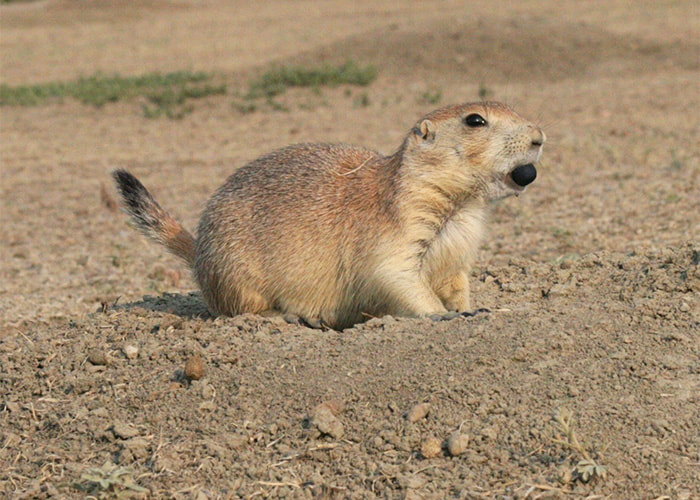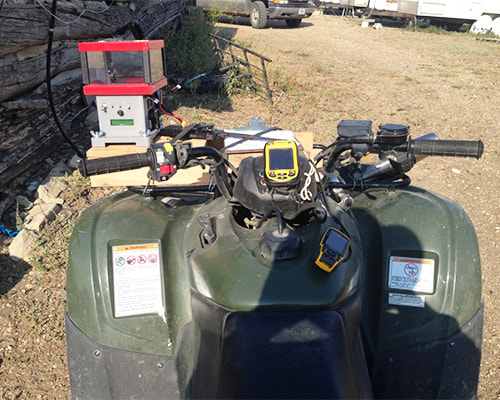|
Flea control with FipBits to prevent plague from killing black-footed ferrets and their prairie dog prey
January 15th, 2023
|
Project Collaborators:
Project Collaborators: U.S. Fish and Wildlife Service U.S. Geological Survey Arizona Game and Fish Department Prairie Wildlife Research BASF Colorado State University World Wildlife Fund Model Avionics Buffalo Gap National Grasslands Badlands National Park Smithsonian Conservation Biology Institute American Prairie Turner Endangered Species Fund |
Background
The primary biological challenge to recovery of endangered black-footed ferrets (BFFs) is sylvatic plague, caused by the bacterium Yersinia pestis, and vectored primarily by fleas. Plague has eliminated thousands of acres of prairie dog colonies in a short time at many BFF reintroduction areas, including the site where the last wild population of BFFs was discovered in 1981 near Meeteetse, Wyoming. Various insecticide dust products have been used successfully for decades in efforts to control fleas and prevent plague. Those treatments are expensive, costing around $30/acre, as the dust needs to be applied down hundreds to thousands of prairie dog burrows on their colonies. In addition, fleas can develop resistance to insecticides, so new, affordable, and practical tools are desperately needed to control fleas/plague on tens of thousands of acres of prairie dog colonies.
Researchers evaluating an experimental plague vaccine for prairie dogs learned that distributing small peanut butter flavored baits on transects at a rate of 50 baits/acre resulted in the vast majority of prairie dogs on a colony finding and eating a bait (Matchett et al. 2021). They also worked out a method and equipment to efficiently mass produce hundreds of thousands of round bait pellets using a machine from Lithuania that was originally designed to make carp fishing baits (BoilieRoller). In addition, World Wildlife Fund and the FWS worked with an inventor to make a machine capable of automatically dropping one of those bait pellets straight down, shooting one 30 feet to the left, and shooting a third bait 30 feet to the right, effectively distributing baits along three transect lines simultaneously. On average, one person can distribute 50 baits/acre over 50 acres in one hour with a “triple-shooter” mounted on an ATV.
Researchers evaluating an experimental plague vaccine for prairie dogs learned that distributing small peanut butter flavored baits on transects at a rate of 50 baits/acre resulted in the vast majority of prairie dogs on a colony finding and eating a bait (Matchett et al. 2021). They also worked out a method and equipment to efficiently mass produce hundreds of thousands of round bait pellets using a machine from Lithuania that was originally designed to make carp fishing baits (BoilieRoller). In addition, World Wildlife Fund and the FWS worked with an inventor to make a machine capable of automatically dropping one of those bait pellets straight down, shooting one 30 feet to the left, and shooting a third bait 30 feet to the right, effectively distributing baits along three transect lines simultaneously. On average, one person can distribute 50 baits/acre over 50 acres in one hour with a “triple-shooter” mounted on an ATV.




